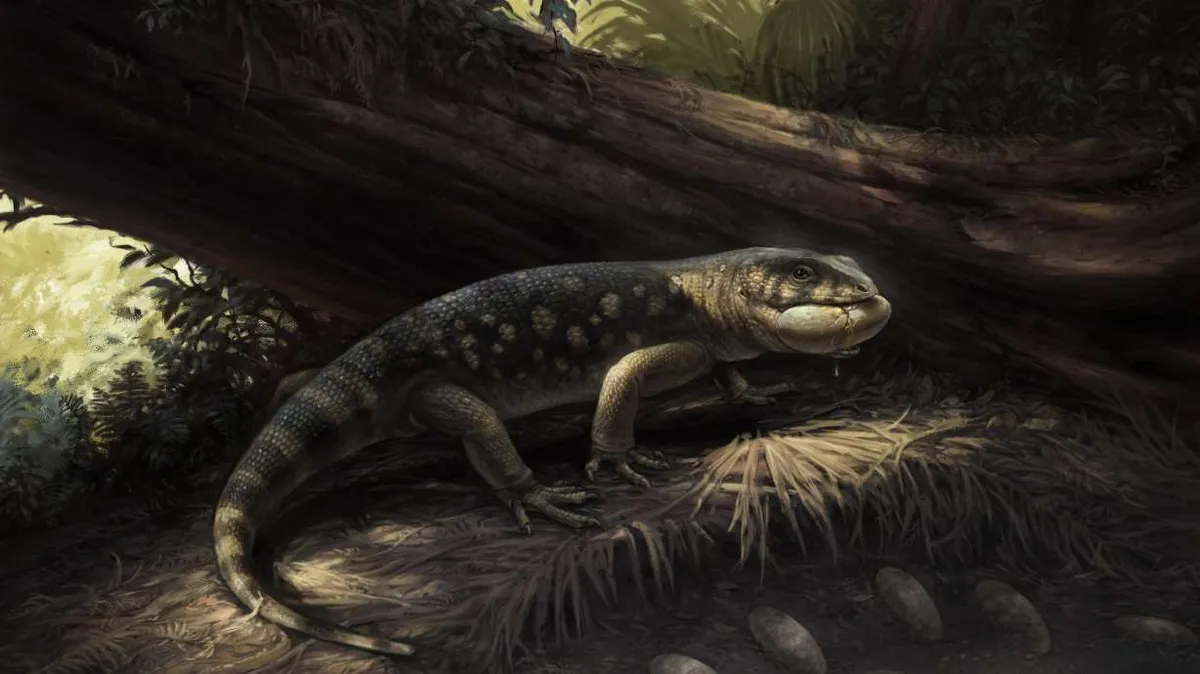
SALT LAKE CITY — During a visit to the Natural History Museum of Utah, Hank Woolley made a remarkable discovery. He encountered a jar simply labeled "lizard," which contained a stunning 76-million-year-old fossil. This fossil had been excavated from the renowned Grand Staircase-Escalante National Monument in 2005 and was subsequently stored at the museum in Salt Lake City. Woolley, who serves as a postdoctoral research fellow at the Natural History Museum of Los Angeles County's Dinosaur Institute, opened the jar to reveal a fragmentary skeleton that piqued his curiosity and spurred further investigation.
Woolley stated, "We know very little about large-bodied lizards from the Kaiparowits Formation in the Grand Staircase-Escalante National Monument in Utah, so I knew this was significant right away." His initial decision to delve deeper into this fossil is now aiding researchers in gaining a clearer understanding of what Utah's ecosystem was like 76 million years ago.
Woolley is the lead author of a groundbreaking study that identifies a new prehistoric ancestor of the Gila monsters found in southern Utah and the broader Southwest U.S. today. The findings from his team's research were published in the journal Royal Society Open Science on Tuesday. "Discovering a new species of lizard that is an ancestor of modern Gila monsters is pretty cool in and of itself," said co-author Randy Irmis, an associate professor at the University of Utah and curator of paleontology at the Natural History Museum of Utah. "But what's particularly exciting is what it tells us about the unique 76-million-year-old ecosystem it lived in."
Initially, paleontologists recognized the significance of the fossil when they first unearthed it two decades ago. It was brought back to Salt Lake City, where it remained, awaiting the right expert to appreciate its importance. That expert turned out to be Woolley, who specializes in lizard evolution. He quickly assembled a research team to piece together the fossils and conduct a thorough analysis of its skull, vertebrae, limbs, and other features.
The research team discovered that this ancient lizard was much more intact than many of its contemporaries, unveiling a species that was previously unknown to experts. This newly identified species, named Bolg amondol (or Bolg for short), was approximately the size of a raccoon, categorizing it as one of the smaller dinosaurs of its time. During this period, southern Utah was characterized as a subtropical floodplain, which provided a rich environment for diverse wildlife.
Irmis noted, "The fact that Bolg coexisted with several other large lizard species indicates that this was a stable and productive ecosystem where these animals were taking advantage of a wide variety of prey and different microhabitats." This discovery not only sheds light on the evolution of lizards but also suggests that there may have been other similar species existing during the Late Cretaceous Period.
The implications of this research extend beyond just the Bolg species. Irmis co-authored another study earlier this year that examined how crocodiles and alligators may have survived extinction, featuring species that coexisted with Bolg. The researchers are optimistic that more discoveries are on the horizon, either waiting to be unearthed in Utah's public lands or perhaps hidden away in jars, just like Bolg.